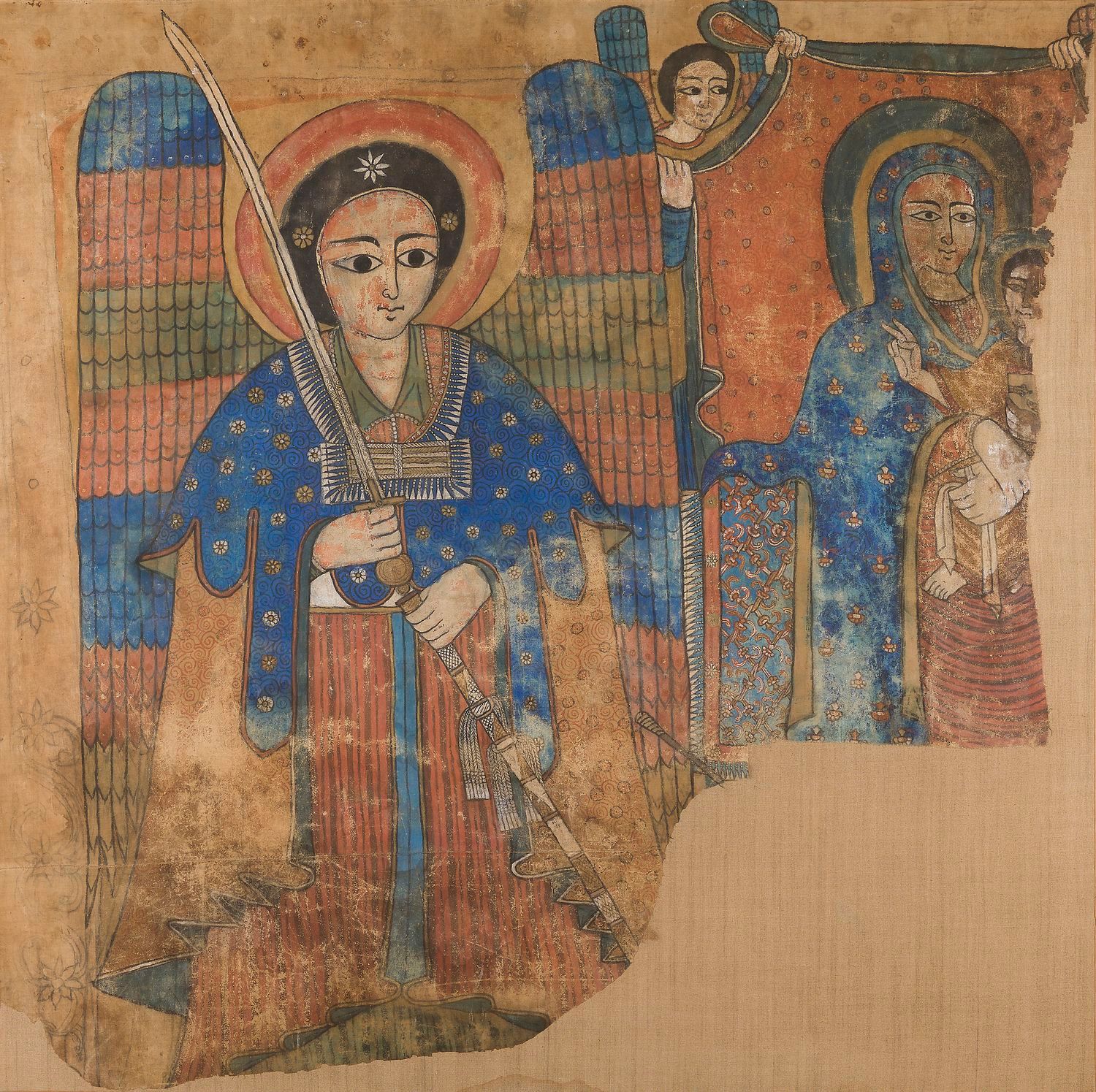Description
A representation of an archangel holding a sword and its scabbard, to the right of Mary and Jesus fragmentary, and surmounted by angels holding a veil above them. This is most likely a representation of the Archangel Michael (or Gabriel) if we refer to the drawings and models of the Ethiopian priest and painter Kasa who collaborated with the Dakar-Djibouti mission in 1933. Note the beauty of the pigments, in particular the depth of the blue pigment which, if we refer to the laser micro-spectrometry analyses carried out on those of the Abba Antonios church, would come from smalt (silicate of potassium and cobalt) used in Europe since the time of the Italian Renaissance, and which was therefore an imported pigment as well as orpiment for the yellow, minium for the orange and vermilion for the red. The other colors were produced locally, carbon for the black, plants for the greens and calcium sulfate for the white pigment and the support of the paints. Concerning the pigments and the Ethiopian priest and painter Kasa, see : Peintures sacrées d'Éthiopie - Collections de la Mission Dakar-Djibouti, Éd. Sépia, 2005, respectively p. 67 and p. 106 to 111. Ethiopia, 17th or 18th century Painting on canvas, re-mounted on canvas and mounted on a stretcher, old pigments, restoration, visible lacks. H. 138 cm - L. : 138 cm Provenance: Christiane and Antonin Besse collection since the 1950s, and passed on by descent. Publication: Photographed and visible in the apartment of Christiane and Antonin Besse in L'oeil, #422, January 1990.
56
A representation of an archangel holding a sword and its scabbard, to the right of Mary and Jesus fragmentary, and surmounted by angels holding a veil above them. This is most likely a representation of the Archangel Michael (or Gabriel) if we refer to the drawings and models of the Ethiopian priest and painter Kasa who collaborated with the Dakar-Djibouti mission in 1933. Note the beauty of the pigments, in particular the depth of the blue pigment which, if we refer to the laser micro-spectrometry analyses carried out on those of the Abba Antonios church, would come from smalt (silicate of potassium and cobalt) used in Europe since the time of the Italian Renaissance, and which was therefore an imported pigment as well as orpiment for the yellow, minium for the orange and vermilion for the red. The other colors were produced locally, carbon for the black, plants for the greens and calcium sulfate for the white pigment and the support of the paints. Concerning the pigments and the Ethiopian priest and painter Kasa, see : Peintures sacrées d'Éthiopie - Collections de la Mission Dakar-Djibouti, Éd. Sépia, 2005, respectively p. 67 and p. 106 to 111. Ethiopia, 17th or 18th century Painting on canvas, re-mounted on canvas and mounted on a stretcher, old pigments, restoration, visible lacks. H. 138 cm - L. : 138 cm Provenance: Christiane and Antonin Besse collection since the 1950s, and passed on by descent. Publication: Photographed and visible in the apartment of Christiane and Antonin Besse in L'oeil, #422, January 1990.
